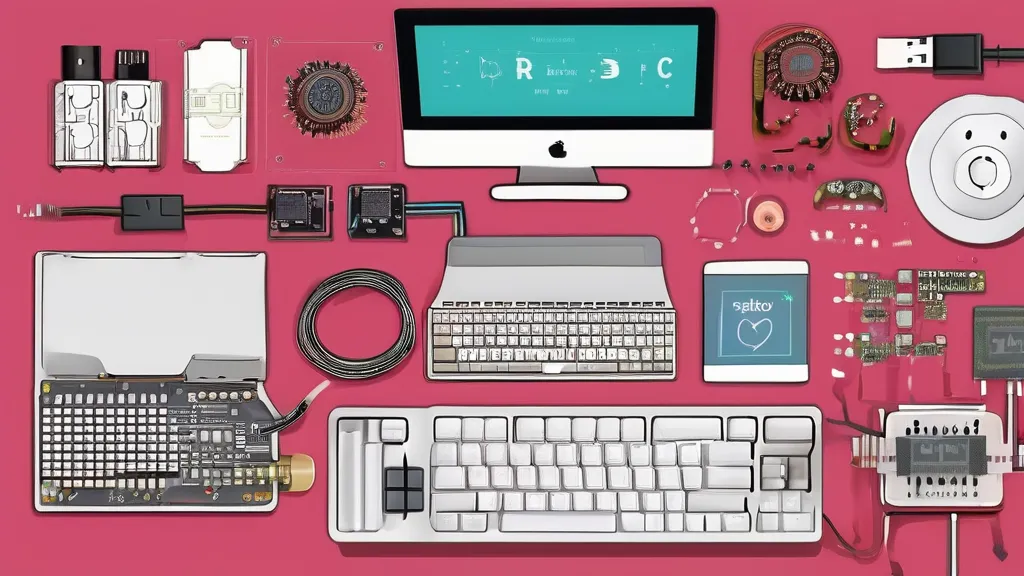Exploring Open-Source, Hackable Hardware for Developers
Unleashing Creativity with Customizable Developer Toys

- Overview of the open-source hardware movement
- Key factors that make hardware hackable
- Top hackable hardware platforms: Raspberry Pi, Arduino, ESP32
- Balancing cost with capability in hardware selection
- Importance of community support in open-source projects
In a world where software often grabs the spotlight, the resurgence of interest in open-source, hackable hardware is a refreshing reminder of the tangible side of technology. For developers, hobbyists, and prototypers, the allure of hardware that can be customized with code offers a unique blend of creativity and functionality. This exploration seeks to uncover the best options available today, focusing on platforms that are easy to program, open for tinkering, and affordable.
The Rise of Open-Source Hardware
Open-source hardware has been gaining traction as a movement that embraces the ethos of collaboration and transparency. Unlike traditional proprietary systems, open-source hardware allows users to modify and share design files, enabling a community-driven approach to innovation. This has led to a flourishing ecosystem where developers can build upon each other’s work, resulting in a diverse array of customizable hardware options.
A prime example of this movement is the Arduino platform, which has become synonymous with open-source hardware. Arduino provides an easy-to-use programming environment and a vast library of pre-written code, making it accessible to both beginners and seasoned developers. Moreover, its modular design allows users to add sensors, actuators, and other components, fostering an environment ripe for experimentation and creativity.
What Makes Hardware Hackable?
When considering hardware platforms, several factors contribute to their hackability. First and foremost is the ease of programming. Platforms that support popular programming languages like Python and C++, or offer a robust Software Development Kit (SDK), are more likely to attract developers. Additionally, the ability to easily add or swap modules, such as sensors or communication interfaces, enhances a platform’s flexibility.
Affordability is another critical factor. For hobbyists and prototypers, cost is often a limiting factor, so finding budget-friendly options is essential. Fortunately, the open-source hardware movement has led to a proliferation of affordable platforms that don’t compromise on quality or functionality.
Top Recommendations for Hackable Hardware
Raspberry Pi
Arguably the most well-known hackable hardware platform, the Raspberry Pi is a low-cost, high-performance computer that has captured the imaginations of developers worldwide. It supports multiple programming languages, including Python, and offers extensive GPIO (General Purpose Input/Output) pins that allow for the addition of various modules and sensors. The Raspberry Pi community is robust, with countless projects and tutorials available online, making it an excellent choice for both beginners and advanced users alike.
Arduino
As mentioned earlier, Arduino has been at the forefront of the open-source hardware movement. Its boards are inexpensive and come in various configurations to suit different needs. The Arduino IDE (Integrated Development Environment) simplifies programming, and the platform’s modularity allows users to easily integrate new components. Arduino’s extensive community support is an invaluable resource for troubleshooting and inspiration.
ESP8266/ESP32
The ESP8266 and its successor, the ESP32, are powerful microcontroller platforms with built-in Wi-Fi and Bluetooth capabilities. They are highly affordable and can be programmed using the Arduino IDE, making them accessible to a broad audience. These platforms are ideal for IoT (Internet of Things) projects, allowing developers to create connected devices with ease.
BeagleBone
BeagleBone boards provide a more powerful alternative to Arduino and Raspberry Pi, with a focus on industrial applications. They offer extensive I/O options and support for multiple programming languages. While slightly more expensive, BeagleBone’s capabilities make it a strong contender for developers looking for robust performance in their projects.
Micro:bit
Designed with education in mind, the BBC micro:bit is an entry-level platform that offers an easy introduction to programming and electronics. It features a built-in accelerometer, magnetometer, and Bluetooth, along with an array of LEDs for simple displays. The micro:bit can be programmed using a variety of languages, including Python, and its simplicity makes it an excellent choice for younger developers.
Balancing Cost and Capability
One of the most significant challenges in selecting hackable hardware is balancing cost with capability. While platforms like the Raspberry Pi and Arduino offer a great deal of functionality at a low price, more powerful options such as BeagleBone may be necessary for specific applications. Developers must carefully assess their project requirements and budget to make an informed decision.
The Community Factor
A vibrant community is one of the most valuable assets of any open-source hardware platform. Communities provide support, share knowledge, and collaborate on projects, creating a rich ecosystem of resources. Developers should consider the strength and size of a platform’s community when choosing hardware, as a strong community can dramatically enhance the development experience.
Conclusion: The Future of Hackable Hardware
The landscape of hackable hardware is continually evolving, driven by the creativity and collaboration of developers worldwide. Platforms like Raspberry Pi, Arduino, and ESP32 have democratized access to technology, allowing anyone with an idea to bring it to life. As the open-source hardware movement grows, it is poised to unlock even more opportunities for innovation, pushing the boundaries of what is possible.
For developers seeking a platform to begin their journey into hardware hacking, the options are plentiful. By focusing on ease of programming, modularity, affordability, and community support, developers can find the perfect platform to suit their needs. As technology continues to advance, the potential for hackable hardware to revolutionize industries and inspire the next generation of innovators is boundless.
Call to Action: Have you experimented with any of these platforms? Share your experiences and projects in the comments below, and let’s continue the conversation about the future of open-source hardware!